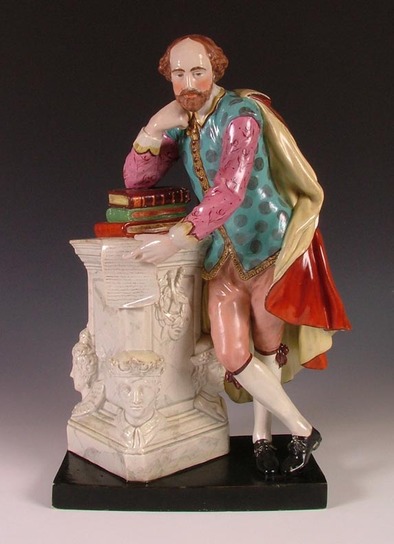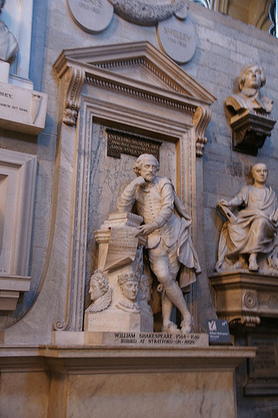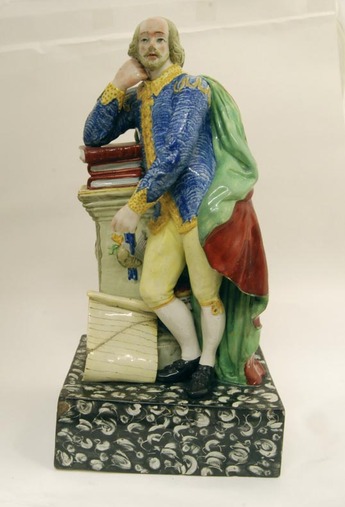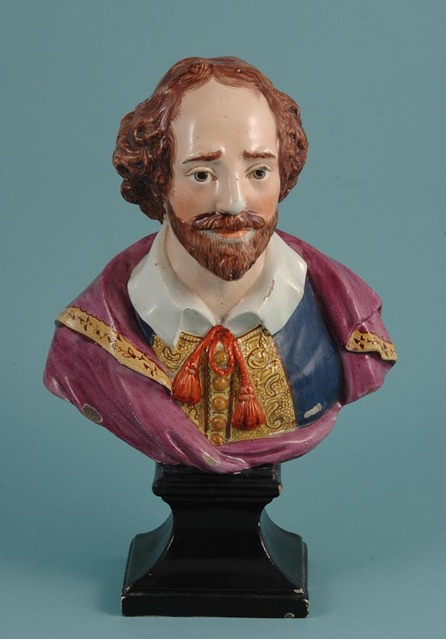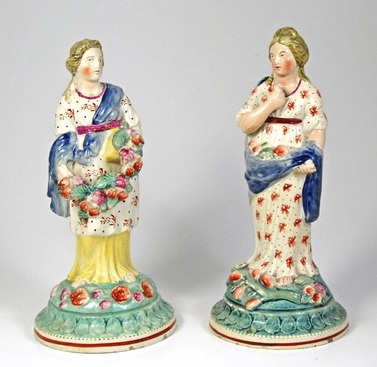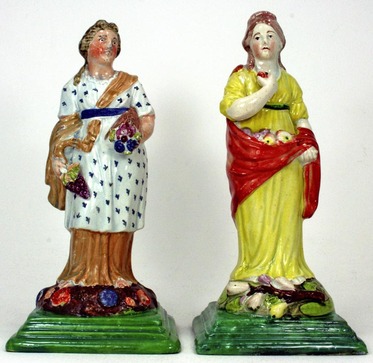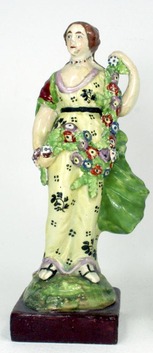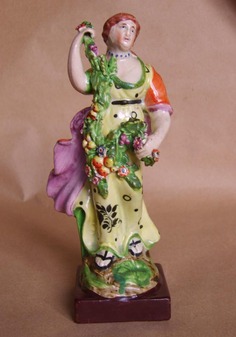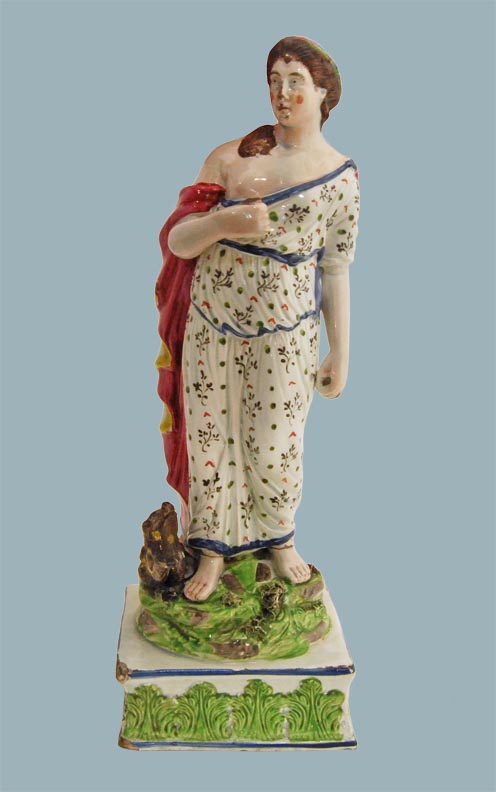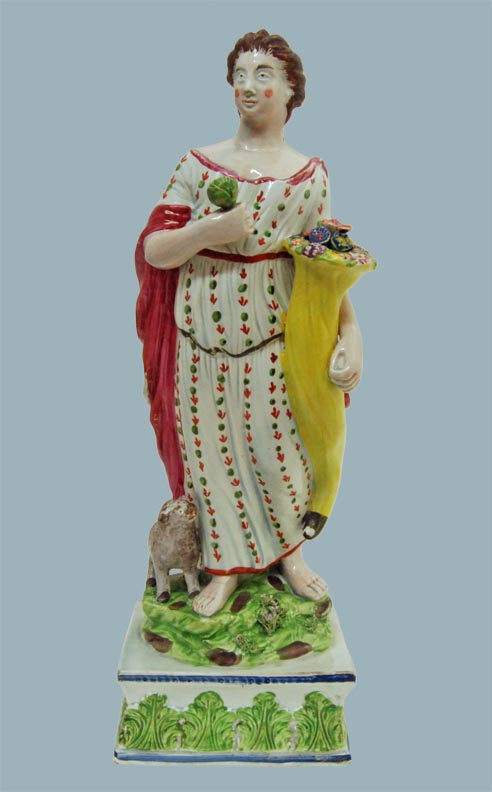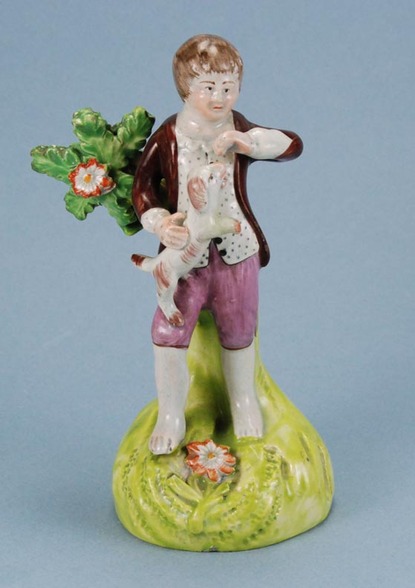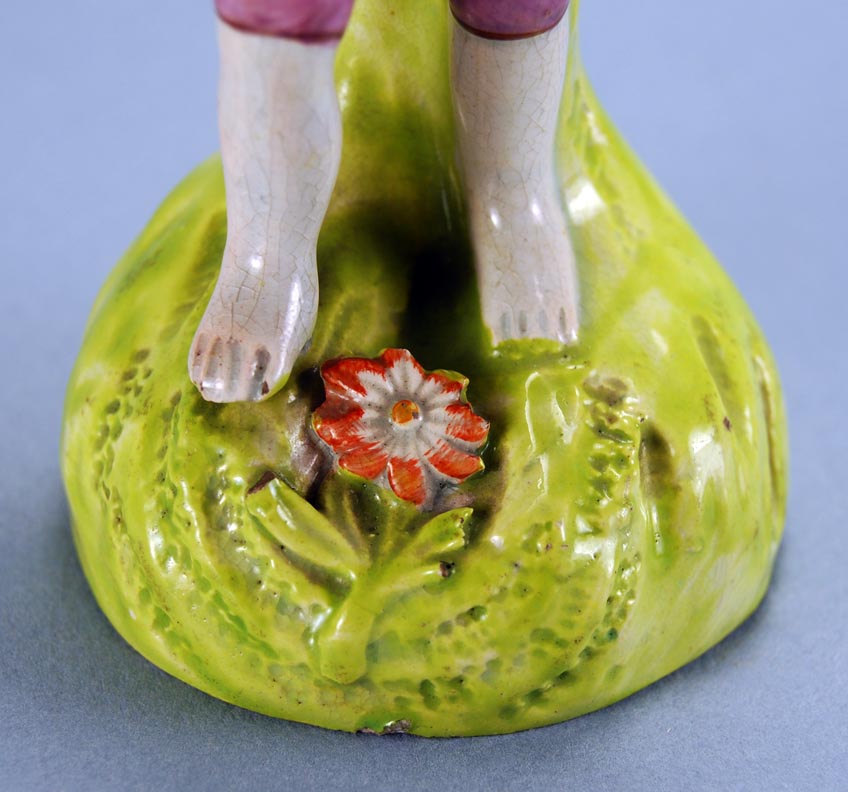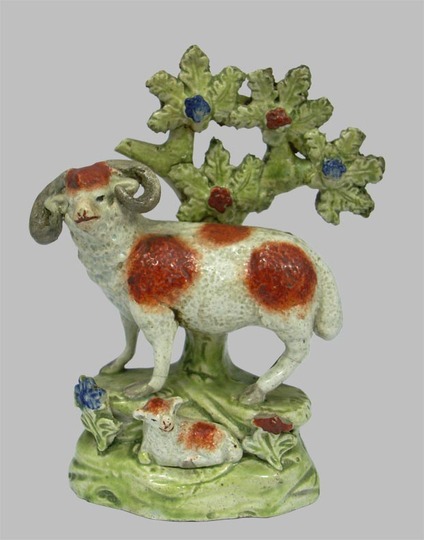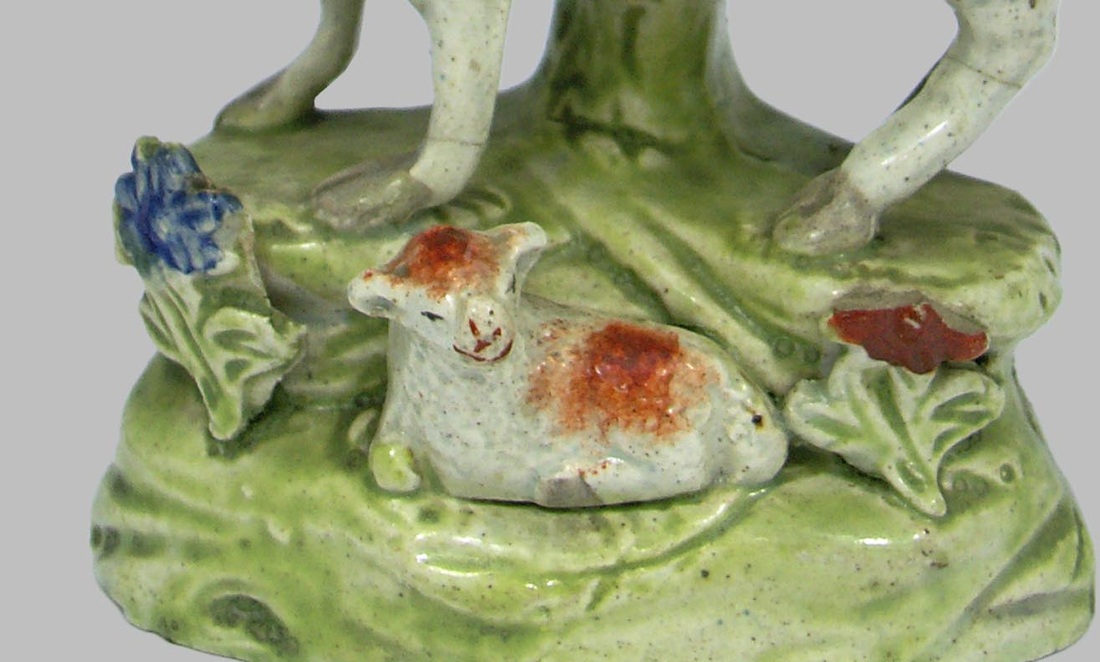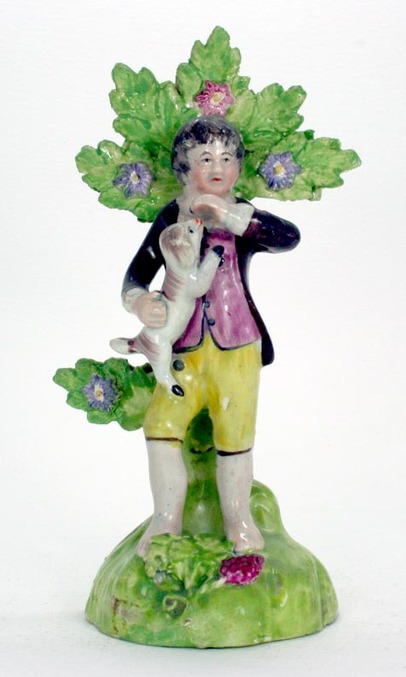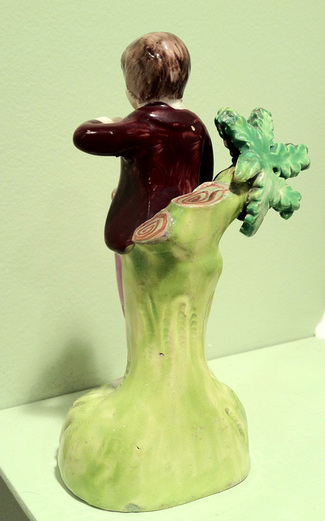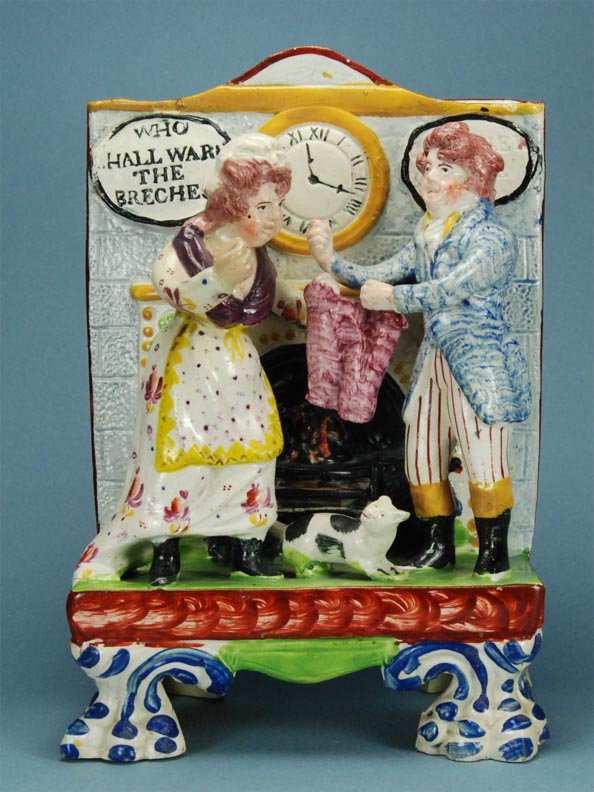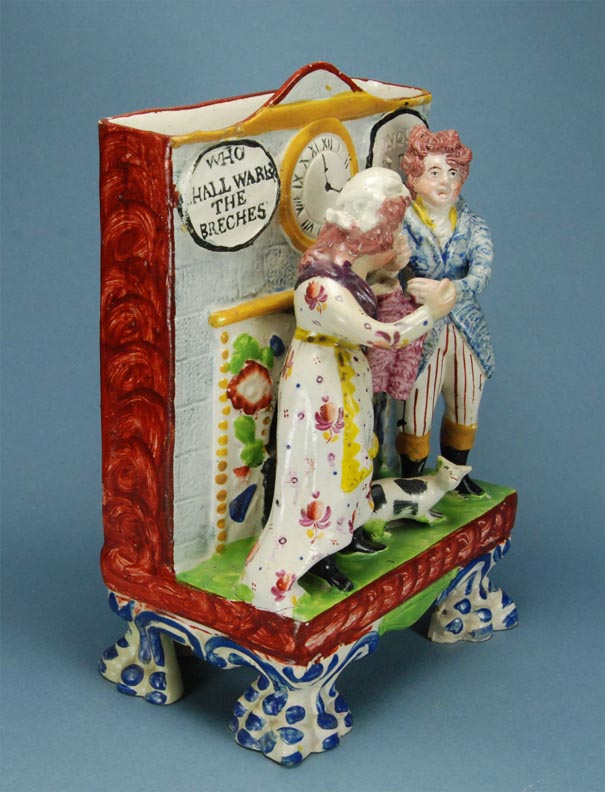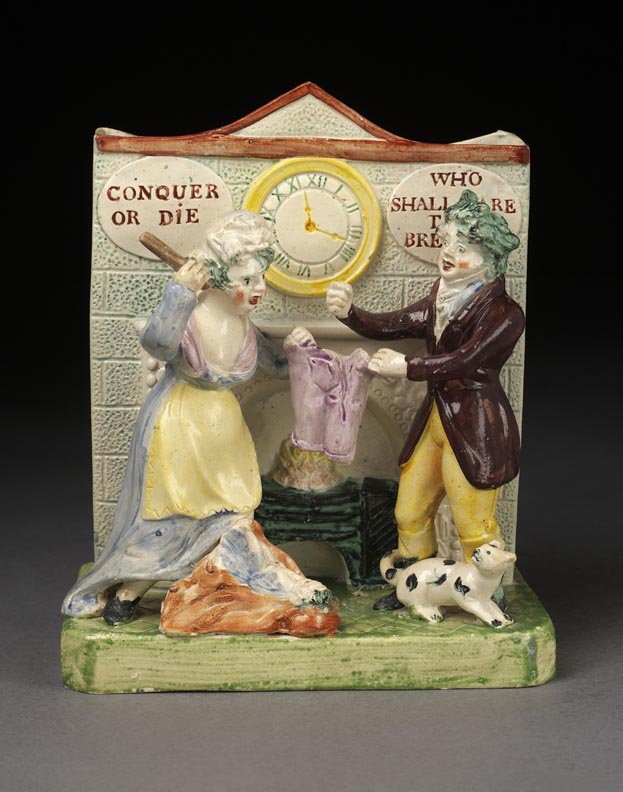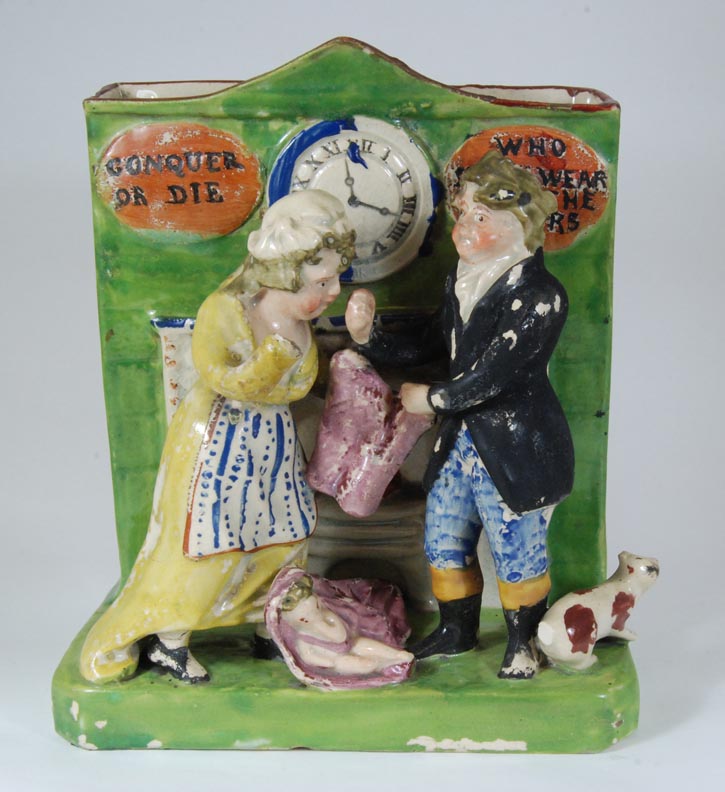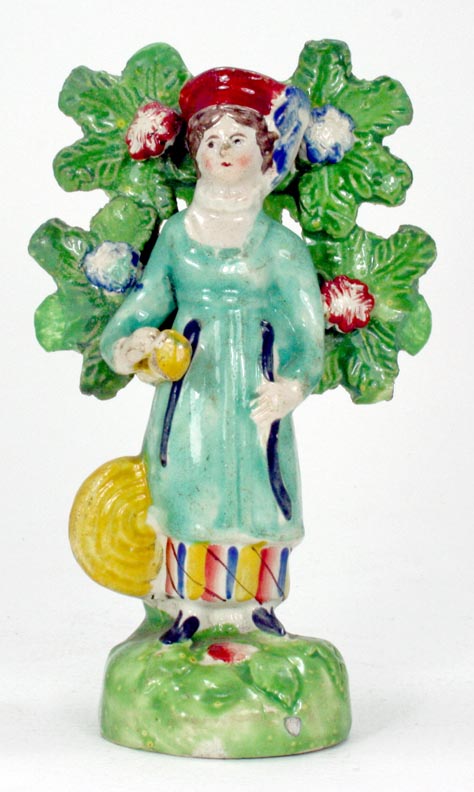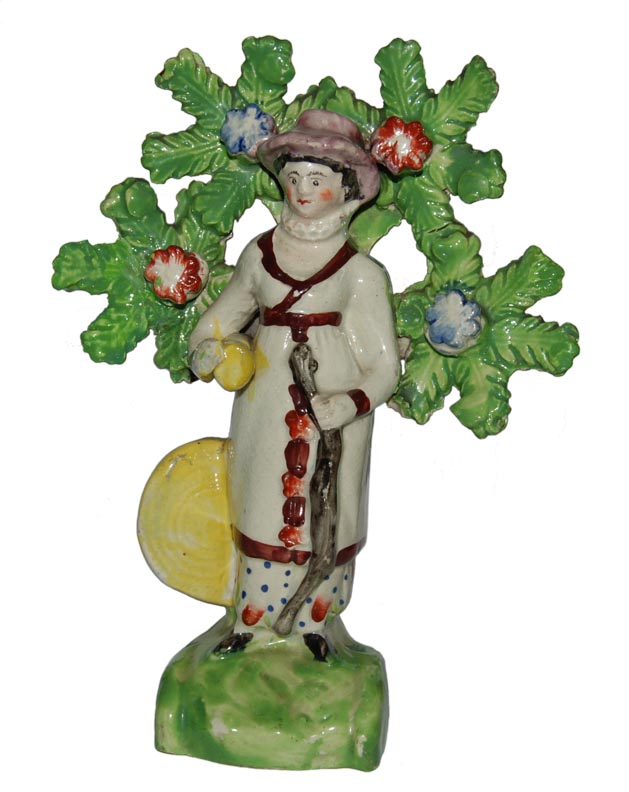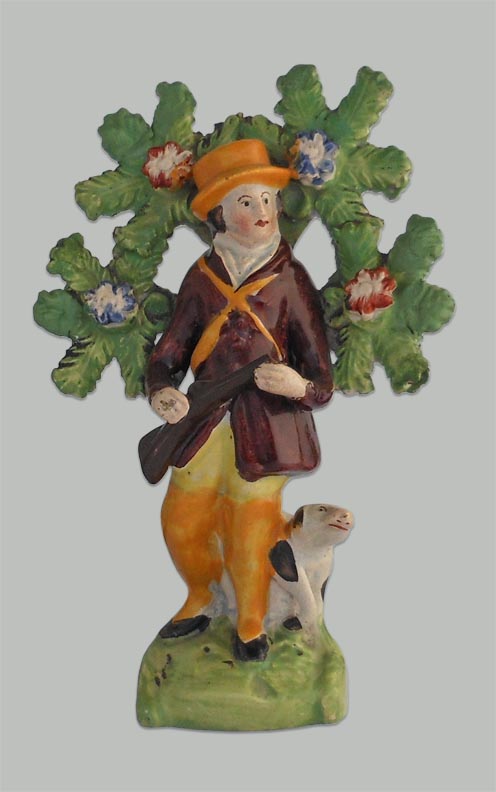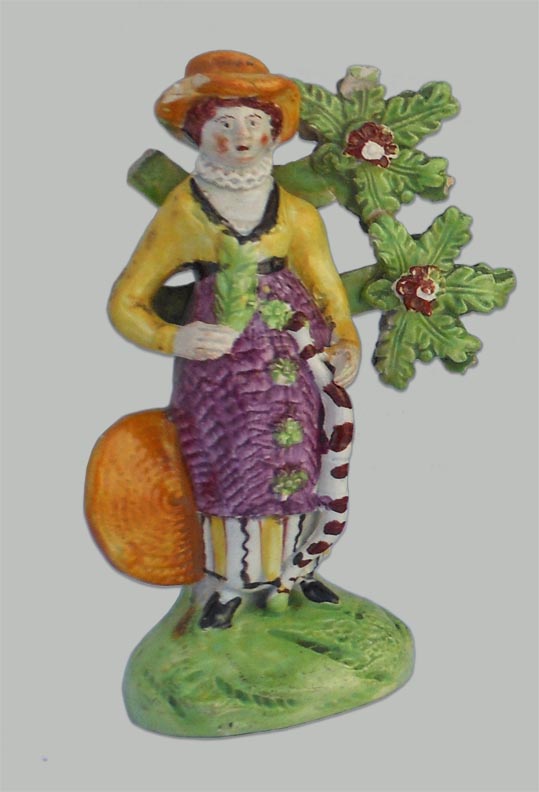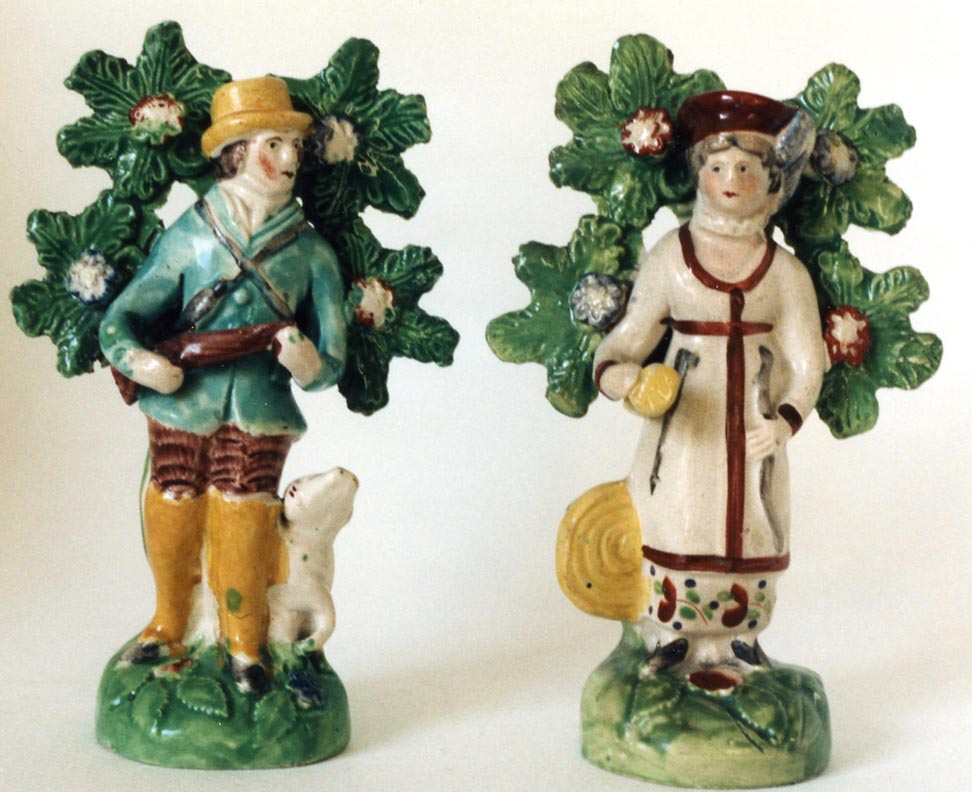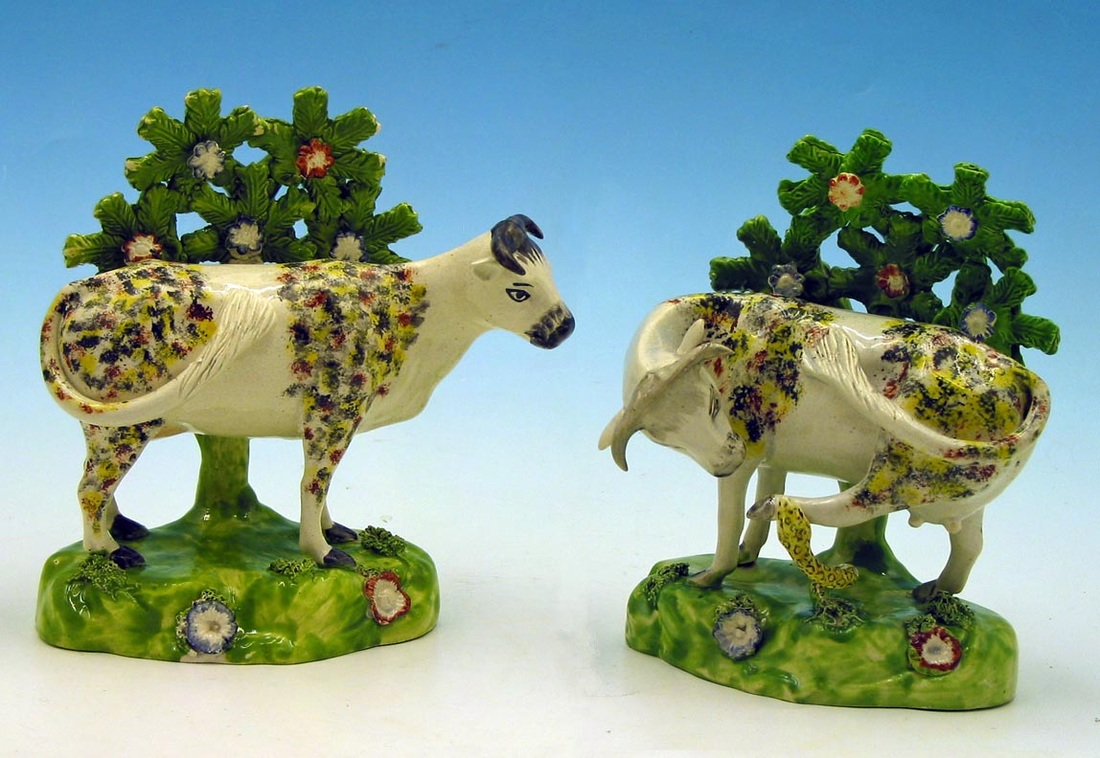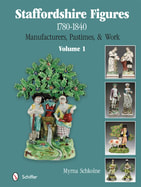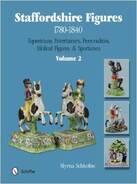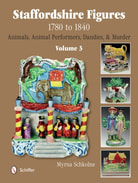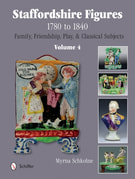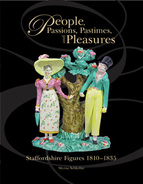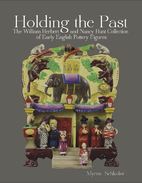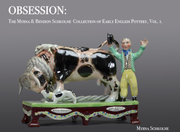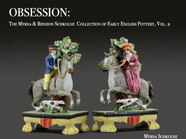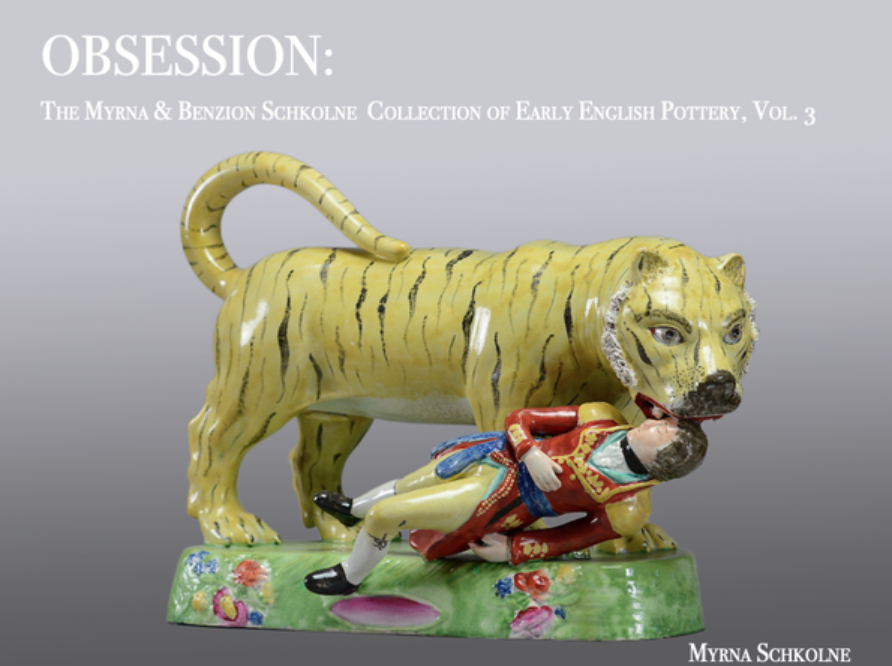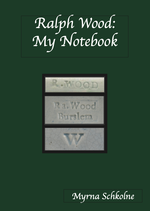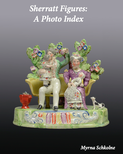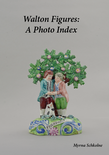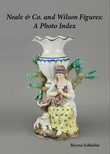It is fitting that earthenware figures of Shakespeare can be particularly fine. Nothing naive or crude here. Below is a stunning example formerly (too late!) in the stock of Andrew Dando.
Large figures of this form are after the marble monument of Shakespeare erected in 1740 in Poet's Corner, Westminster Abbey. Such figures are believed to have been made by Enoch Wood or Wood & Caldwell. Enoch Wood was into time-capsules and he hid examples of his work for later discovery. A similar large figure of Shakespeare was unearthed behind a wall he is believed to have erected in 1810. This figure of Andrew's is incised "P.V." These are the initials of the London plaster maker Peter Vanina, and so Andrew's figure is thought to be derived from a reduced scale plaster wrought by Vanina after the Westminster Abbey marble.
Enoch Wood was not the only potter to capture Shakespeare in clay. This figure is in the Potteries Museum. It is a little shorter--about 15.5".
Some busts of Shakespeare are made to the same very high standard as the Enoch Wood figure, and these too are probably Enoch Wood's handiwork.
Derby made a smaller porcelain figure of Shakespeare, about 10" high. I have photographed a pearlware look-alike for my book, so I hope we will have Shakespeare well represented.
